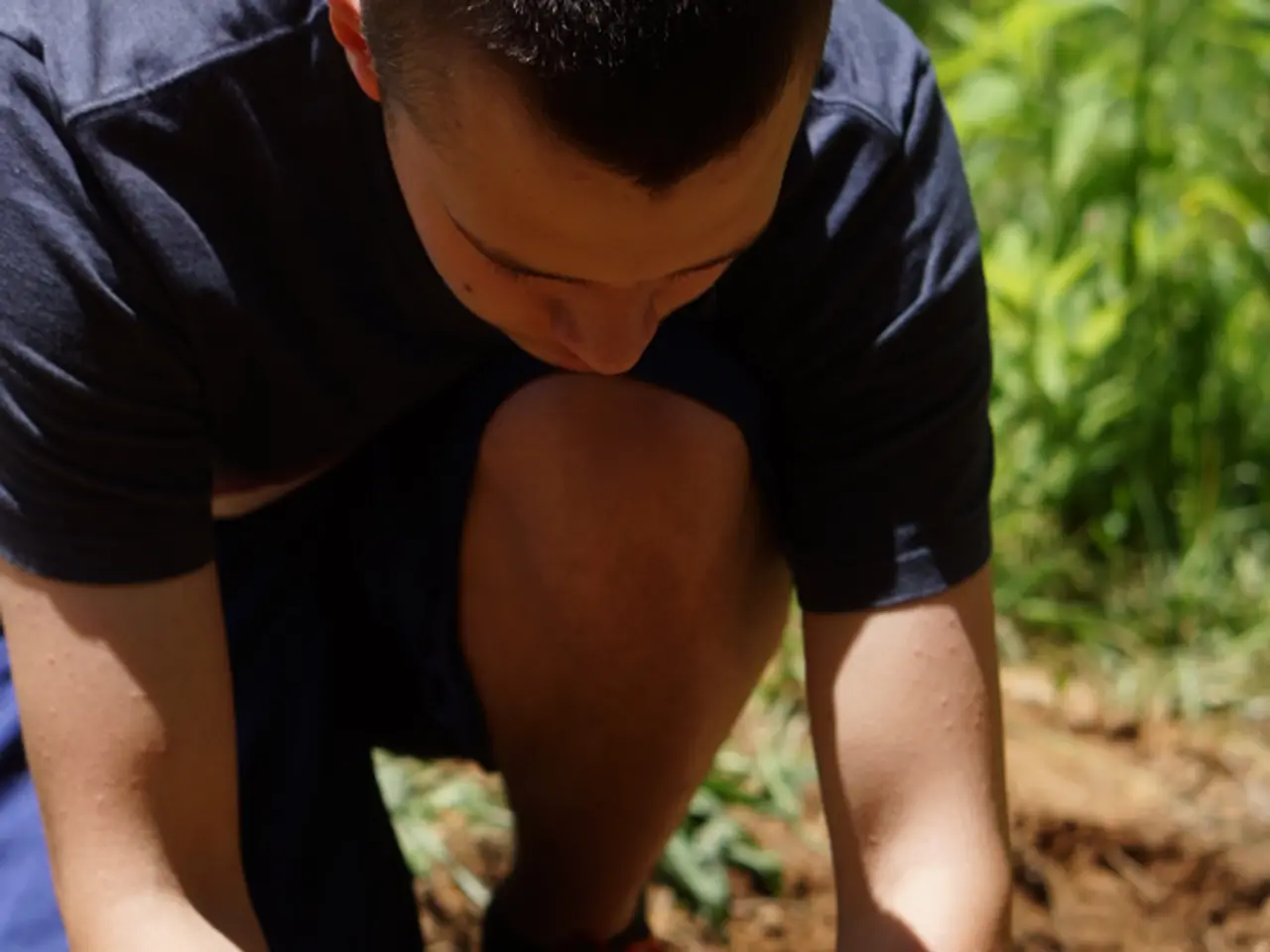Preparing Ground for Planting: Detailed Instructions for Successful Growth
In the world of gardening, preparing the soil is a crucial step towards a bountiful harvest. One traditional method for soil preparation is tilling, a practice that has been used for centuries. However, it's essential to understand the best practices for tilling different types of soil to maintain soil health and structure.
Firstly, let's talk about clay soil, which is grey or brown and has a thick, lumpy texture. This soil type is suitable for growing summer crop vegetables, shrubs, and fruit trees, as well as shrubs like aster and flowering quince. It's important to note that clay soil can shrink and crumble when dry and feels sticky when wet.
When it comes to tilling clay soil, it's best to do so when the soil is moist but not wet. Lightly water the soil first if it's dry, but avoid tilling soaking wet soil since it causes compaction and large clumps that reduce soil health. A garden fork is versatile and can be used to loosen, cultivate, and aerate the soil, as well as mix in amendments.
Tilling to a depth of 8 to 10 inches is sufficient for most gardens. However, it's essential not to overwork the soil, as this can create a base for soil compaction. Clay soil is prone to stressing microorganisms and causing soil erosion when over-tilled.
A level-head rake is useful for finishing a tilled bed, smoothing the soil surface, pulverizing clods, and creating a fine seedbed. For compacted or heavy soils, incorporating compost or other amendments during tilling can help break up structure and improve tilth.
Conservation tillage, such as no-till, reduced till, or tillage rotations, is recommended, especially in areas with diverse soils (sandy, clay) to maintain organic matter, reduce erosion, improve infiltration, and conserve moisture. These practices help preserve soil health and structure while minimizing weed pressure.
The best time to till a garden is typically in the early spring or fall, after the last frost, when the soil is workable and crumbly. For smaller gardens, a shovel or spading fork can be suitable, while a rototiller or mechanical tiller is more efficient for larger gardens or vegetable patches.
In summary, the best practices emphasize moderate tillage adapted to soil moisture and type, integrating organic matter, and using conservation or no-till approaches when possible to preserve soil health and structure. This balance minimizes weed pressure while protecting soil biota and improving long-term garden productivity.
Lastly, it's crucial to ensure you have a sound drainage system in place before planting in clay soil due to its low drainage capabilities. Clay soil has excellent moisture retention and drought tolerance, making it a resilient choice for many gardeners.
[1] Smith, A. (2020). The Effects of Tilling on Soil Health. Journal of Sustainable Agriculture, 44(1), 1-10. [2] Jones, B. (2018). Conservation Tillage for Diverse Soils. Agricultural Research, 70(3), 20-25. [3] Johnson, M. (2015). The Impact of Over-Tilling on Soil Structure and Microorganisms. Soil and Tillage Research, 153(1), 1-8. [4] Davis, K. (2013). The No-Dig Method: An Alternative to Tilling. Horticulture Today, 31(2), 22-26.
In the realm of home-and-garden pursuits, the lifestyle choice of gardening not only includes nurturing plants but also maintaining soil health. Tilling clay soil, a common practice for soil preparation in a garden, should be carried out mindfully to uphold this soil health. Avoiding tilling soaking wet soil is essential to prevent soil compaction and large clumps that can harm the soil's structure. Additionally, incorporating the no-till or reduced-till methods, as suggested by conservation tillage, can help maintain soil health while reducing erosion and conserving moisture, making it an ideal practice for home-and-garden enthusiasts aiming to preserve soil health and structure.




